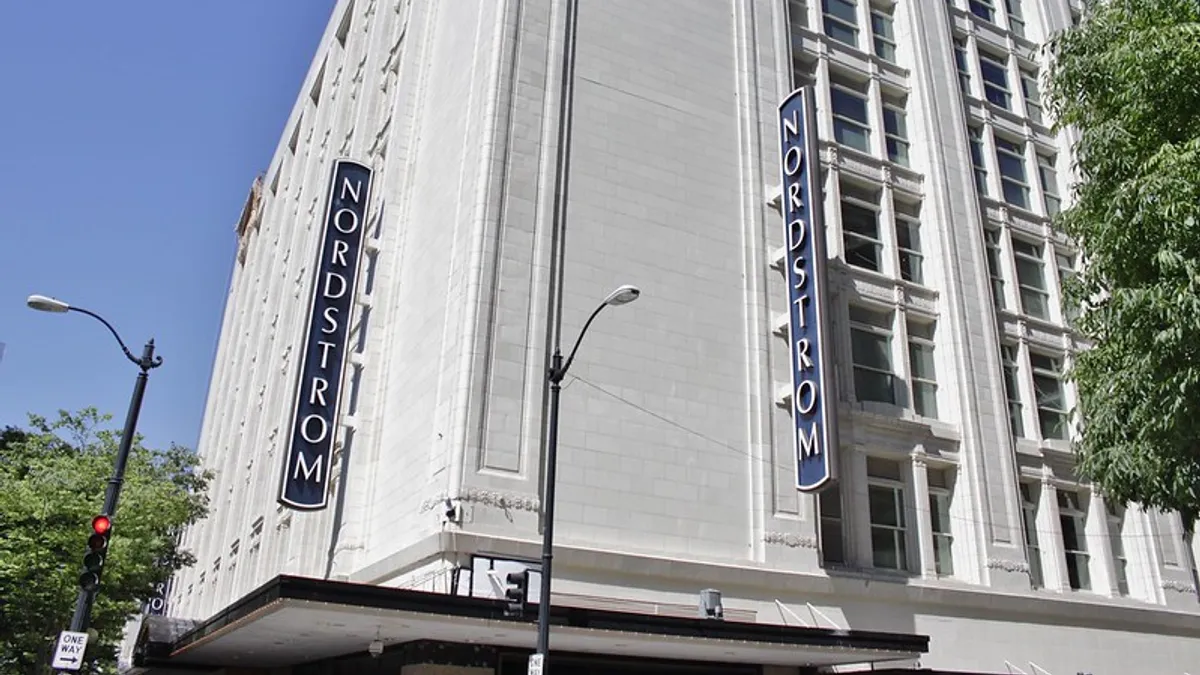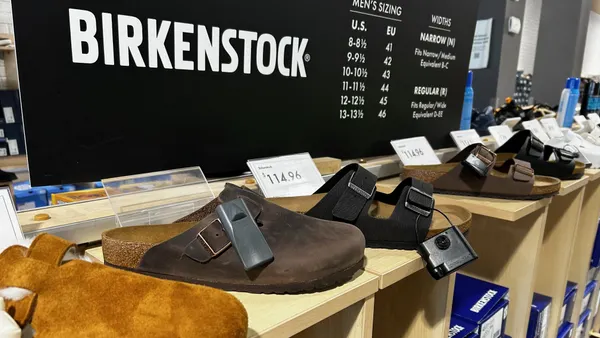Dive Brief:
-
Nordstrom on Tuesday reported that second quarter net sales fell 53% to $1.8 billion, with full-price falling 58% and off-price Rack sales down 43%. Delaying its Anniversary Sale until the third quarter hurt sales by 10 percentage points, and revenue suffered because stores were closed about half the time due to the pandemic, the retailer said.
-
Digital sales declined 5%, but the company saw more than 50% growth in new customers, according to a company press release. Nordstrom doesn't report store comps.
-
The company swung to a $255 million net loss, from $141 million in net income a year ago. Gross profit declined to 21% from 35% due to planned markdowns and lower sales volume but reflected sequential improvement in merchandise margin. Lower-than-expected returns helped keep inventories lean, down 24% year over year.
Dive Insight:
With losses this year of more than three-quarters of a billion dollars, Nordstrom's year so far has been extremely painful, and the second quarter offered little relief.
"Although some pandemic deterioration was expected, that Nordstrom's revenue was effectively halved during the second quarter is little short of a disaster," GlobalData Retail Managing Director Neil Saunders said in emailed comments. "This is especially so when compared to the robust numbers coming from some of the general merchants and homewares players."
Executives on Tuesday discussed the casualization of attire, which has only accelerated as the pandemic has kept many workers home bound, and said they are shifting their assortment at least somewhat by expanding categories like home and activewear not usually in focus for a retailer known as a curator of fashion.
"We're getting a lot of very clear signals about what's relevant and meaningful to our customers in this moment," Pete Nordstrom, president and chief brand officer, told analysts during a conference call, adding that the retailer made adjustments to the assortment "even at a really late date with our Anniversary offering. And again, you talked about clear signals, I mean we're seeing it, and we're having some outsized performance in things like active and home and what have you, and it gives us a lot of confidence on what's going to happen here going into the second half of the year because we are in such a clean inventory position."
Indeed, Nordstrom is known for keeping a tight rein on inventory, normally a tactic to protect margins. In the second quarter, the lower sales volume and planned markdowns drove gross margin down about 1,300 basis points, by BMO Capital Markets' measure. At the moment, Nordstrom's inventory picture may reveal more about pandemic-related upheaval throughout the supply chain than its own level of control. While there's been much talk of a glut in inventory as sales have been gutted, due to the pandemic and its economic fallout, CEO Erik Nordstrom noted that "access to product [has] been a little spotty."
"There's no doubt that our vendor base has pulled back during the pandemic, and it takes a closer collaboration with our vendor partners in many cases to get the flow that we want," he said.
The consequence has been that lean inventory hasn't protected margins as usual, for Nordstrom and other retailers.
"When retailers stopped ordering product at the beginning of COVID, manufacturers stopped making it," BMO Managing Director Simeon Siegel said in an email. "So for the time being, there is simply a lack of supply out there, rather than retailers buying light right now. Normally light inventory translated into minimal promotions which translates into better [gross margins]. However, very few companies have been seeing the typical benefits of light inventory this period."















